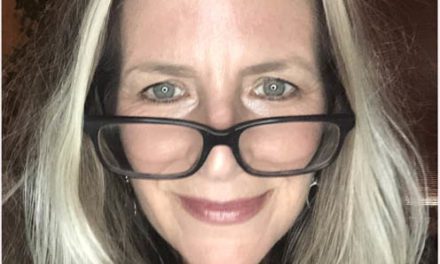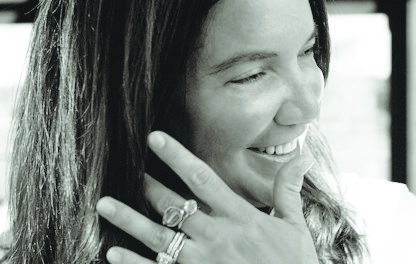Greetings, dear reader, from a hotel room near the San Francisco airport. We fly home tomorrow at 6 am – shudder – and I’m trying to get a jump on a mountain of work after a week of benign neglect.
I’ve told y’all about my mixed marriage, right? Me, a small-town girl-next-door from Alabama? My husband, an international man of mystery – okay, Army brat – born in San Francisco?
Somehow, this unlikely formula has held up for almost 23 years, and this weekend, we attended a family reunion with Jeff’s West Coast cousins in Woodland, a little town outside of SF not so different from my own in Alabama.
But first, we spent a few days in The City.
That’s what they call it out here. The City. Call it anything else, and you out yourself as an outsider. “San Fran” is barely tolerated. Never say “Frisco,” ya rube.
I have loved The City ever since Jeff first brought me here 25 years ago. I was a girlfriend then, not a wife, so it was all very sparkly and romantic. He bought me a black velvet hat from a hippie shop, introduced me to Thai food, cable cars, wild parrots, and vertiginous streetscapes. I learned all about underground transit, Giants baseball, cold weather in July, and churros.
Throughout our marriage, we’ve returned every two or three years, usually with our daughter in tow. This year, it was just the two of us – first trip since before the pandemic – and I was anticipating some of that old romantic sparkle.
But I was wary, too. Like most of you, I’d heard some things about San Francisco over the past few years. How it had decayed. Come to ruin. Gone to pot. Etcetera.
I’d heard there would be hypodermic needles littering the streets, which would be paved with feces and flooded with urine. I was told there’d be homeless people camped outside our hotel, and a criminal around every corner, waiting to steal my purse.
I’d braced myself for an apocalyptic nightmare. It never materialized.
We stayed down near Fisherman’s Wharf, in a sweet boutique hotel I was smitten with over 20 years ago. It was a very expensive treat for us back then, and it’s far more affordable now. Not because we got rich – though we’re slightly better off than we were as newlyweds – but because they’ve had to lower their prices.
And those lower prices were just one of many “perks” – though I hate to call them that – that we, as tourists, were able to enjoy in the current, beleaguered iteration of this iconic American city. Another was smaller crowds. Fewer people. Less hassle. And, from our perspective, cleaner, more orderly streets.
We saw no needles, no feces, no urine – nor did we smell them – and there were no homeless encampments near our hotel. Not only did nobody steal my purse, but the people we encountered – locals and tourists alike – were more gracious than ever before. It almost felt like a different city. A friendlier city.
Back in 2016, I opined on San Francisco in a column that became forever notorious in our family when my daughter’s AP English teacher embarrassed her by using it as an example in her classroom. (An example of what I was never quite sure!) In that piece, I wrote:
“Fair or not, New Yorkers have a reputation for being brash and no-nonsense. But what’s up with San Francisco? As much as I love that beautiful city, I never quite feel like it loves me back. No matter how often I visit – and since it’s my husband’s hometown, that’s fairly often – I’m always thrown by the way people pass each other on the street so brusquely, without greeting or even acknowledgment. People don’t make eye contact. Exchanges are terse. The city prides itself on its humanitarianism and its great well of tolerance – those values are proclaimed from signs and posters and tee-shirts all over town – but to me, it always feels like everybody’s a little ticked off. There’s a low-grade hostility in the air.
“Maybe it just feels that way to outsiders? Or maybe just to certain outsiders? Maybe San Franciscans take one look at me – and hear my “hey, y’all” – and recognize me as one of those people… the ones who are forever mucking up that utopia they envision just beyond the horizon. A Southerner.”
It hasn’t been like that this time. And my husband and I have been trying to figure out why. Why have things been so much better on this trip, when we expected them to be so much worse? Because make no mistake – according to all reports, things are demonstrably worse in San Francisco. For those who live here, I mean.
The homeless population has increased dramatically, the crime rate is way up, and the worst parts of The City – particularly The Tenderloin – are worse than ever. We saw none of that, but what we did see – and it was astonishing – was empty building after empty building in the commercial district downtown.
“Let’s stroll over to Maiden Lane and find somewhere chic to have lunch,” Jeff suggested on our first day here. (I think that might be the first time I’d ever heard my husband use the word “chic.” It was rather adorable.) We had nothing to do until the Giants-Dodgers game that night, and we were just meandering, enjoying a plan-free day.
Well, not only was there nowhere “chic” to have lunch on Maiden Lane – the heart of SF’s fashion district – but there was virtually nowhere to shop. Almost every building had a boarded-up door featuring a “For Lease” or “For Rent” sign. It was shocking. And there were plenty of other streets just like it.
There’s no way a city with this much empty commercial space can hope to get its homeless situation or crime rate under control. Not when it’s bleeding tax dollars. And, of course, businesses don’t want to invest their tax dollars in a city with such a terrible homeless situation and crime rate.
It’s a self-perpetuating cycle, and it’s vicious. I have no idea how our beloved San Francisco will pull out of it.
All I know is that we did our part this week by adding to the tourist economy. And I’m trying not to feel guilty about the fact that this failing, falling-apart San Francisco felt more “utopian” to me than it ever has.
Jeff thinks maybe it’s because those who haven’t left The City – who decided to stay, or had to –have pulled together in solidarity, becoming a kinder, gentler population. There may very well be something to that.
But it might be even simpler. I tend to think that fewer people just make for happier people. Less pushing. Less shoving. More forced eye contact. Smiles that need reciprocating. Pleasant greetings you just can’t ignore. Suddenly, instead of a milling crowd – a faceless mob – you find yourself among fellow human beings.
I even trotted out my “hey, y’all” a couple of times this week. Nobody seemed to mind a bit.









